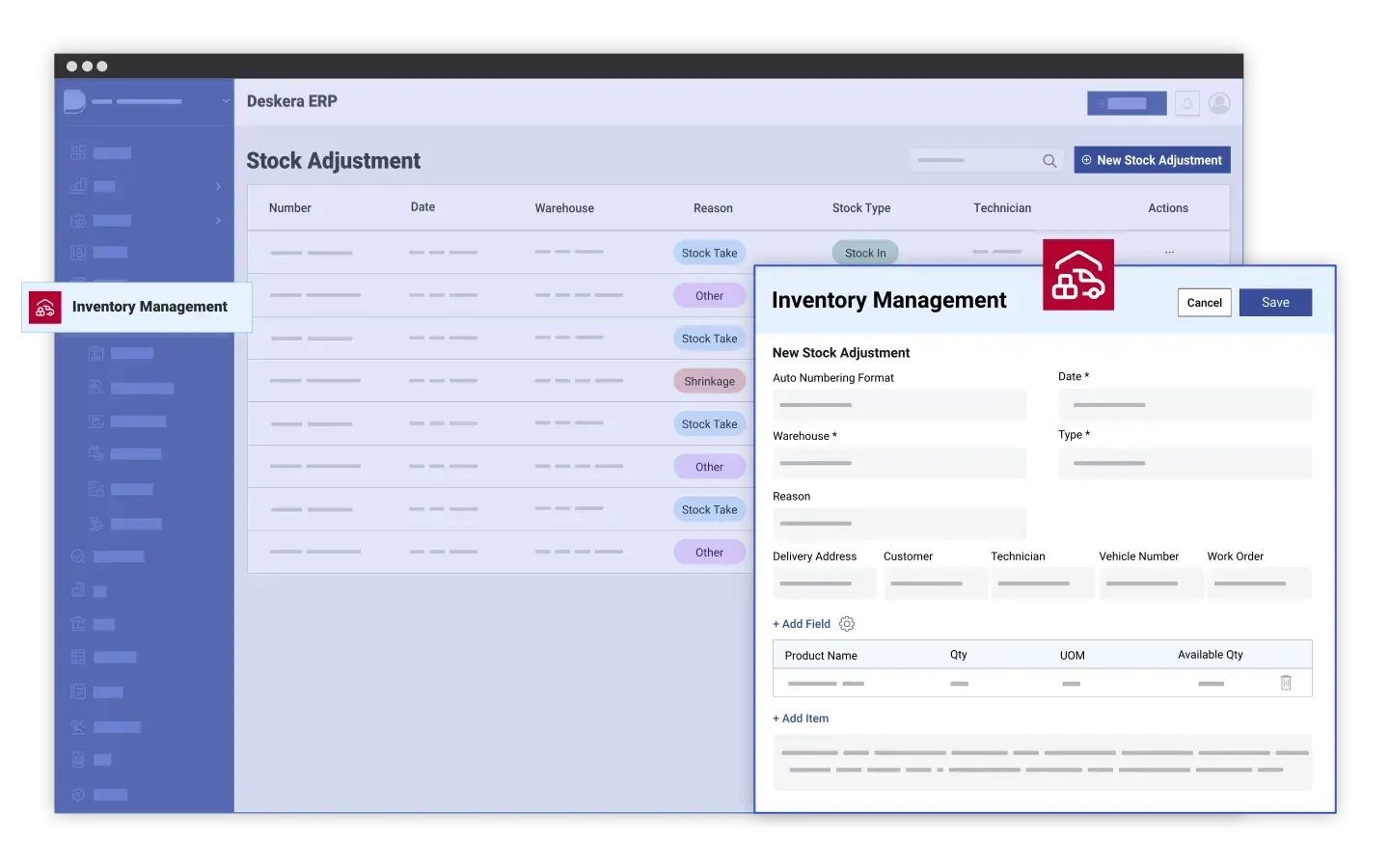Effective inventory management is the backbone of any successful business operation. It involves the meticulous coordination of ordering, storing, and utilizing a company’s inventory to ensure that products are available when needed while minimizing costs associated with overstocking or stockouts. Poor inventory management can lead to lost sales, increased operational costs, and dissatisfied customers.
As businesses grow and market demands become more complex, traditional methods of inventory management often fall short. This is where automated inventory management systems (AIMS) come into play. Automated inventory management system leverages advanced technologies to streamline inventory processes, offering real-time visibility, automated reordering, and data-driven insights.
According to Myos, 36% of supply chain professionals are optimizing inventory management to maintain a harmonious balance between supply and demand. These professionals understand the critical role that a well-stocked and efficiently managed inventory plays in sustaining business success.
For businesses looking to integrate robust and scalable automated inventory management systems, Deskera ERP offers a comprehensive solution. It provides not only inventory management capabilities but also integrates seamlessly with other business functions like accounting and customer relationship management.
With features like mobile accessibility, AI-driven insights, and advanced reporting tools, Deskera ERP empowers businesses to optimize their inventory processes and drive growth efficiently.
What is an Automated Inventory Management System?
An automated inventory management system is a technology-driven solution designed to streamline and optimize the processes involved in inventory management.
Unlike traditional methods that rely heavily on manual tracking and data entry, an automated inventory management system uses software to manage inventory levels, track stock movements, and forecast demand with minimal human intervention.
The core of an automated inventory system lies in its ability to provide real-time data and analytics, allowing businesses to make informed decisions about their inventory management. This system can automatically update stock levels, trigger reordering processes, and alert managers to potential issues such as low stock or overstocking.
For example, in an automated inventory management system project, businesses might integrate barcode scanning or RFID technology to ensure accurate tracking of every item in their inventory. This real-time visibility is crucial for efficient stock management, helping businesses reduce the risks associated with stock outs or excess inventory.
One of the significant advantages of implementing an automated inventory management system for small and medium-sized enterprises is the potential for cost savings and increased efficiency.
By automating routine tasks, businesses can reduce labor costs, minimize errors, and improve order fulfillment times. However, it’s essential to weigh these benefits against the initial investment costs and potential challenges, such as the need for staff training and system integration.
When considering an automated inventory management system for your business, it's important to explore various automated inventory systems examples to find the one that best fits your specific needs.
Additionally, understanding the automated stock control system advantages and disadvantages will help you make a well-informed decision that aligns with your business goals.
Key Features of Effective Automated Inventory Management Systems
An automated inventory management system offers a range of features designed to optimize inventory management and streamline stock management processes.
Here are some of the key features that make these systems effective:
1. Real-Time Inventory Tracking
One of the most critical features of an automated inventory management system is real-time tracking. This allows businesses to monitor inventory levels instantly, reducing the risk of stockouts or overstocking. Real-time data ensures that you have an accurate picture of your stock at all times, which is essential for effective inventory management.
2. Automated Reordering
An automated inventory management system can automatically trigger reorder processes when stock levels reach a predefined threshold. This feature is particularly valuable for businesses with complex stock management needs, as it helps maintain optimal inventory levels without manual intervention. It’s a significant advantage in reducing human error and ensuring that your inventory is always adequately stocked.
3. Demand Forecasting
Using historical data and advanced algorithms, an automated inventory management system can forecast future demand for products. This predictive capability helps businesses plan their inventory management strategies more effectively, ensuring that they can meet customer demand without overcommitting resources.
4. Integration Capabilities
Integration is a crucial aspect of any effective inventory management system. The ability to seamlessly connect your automated inventory management system with other business systems, such as ERP, CRM, and accounting software, creates a unified approach to inventory management.
This integration ensures that data flows smoothly between different departments, enhancing overall operational efficiency and enabling better decision-making.
5. Data Analytics and Reporting
Advanced reporting and analytics are essential features of a robust automated inventory management system. These tools allow businesses to generate detailed reports on inventory performance, providing insights that are critical for strategic planning.
With comprehensive data analytics, companies can identify trends, optimize stock levels, and make informed decisions that drive growth and efficiency in their inventory system.
6. Mobile Accessibility and AI Integration
In today’s fast-paced business environment, having mobile access to your inventory management system is a necessity. Mobile accessibility allows managers to monitor and manage inventory from anywhere, providing the flexibility needed to respond quickly to changes in stock levels or market demand.
Additionally, the integration of AI, such as AI Assistant David, further enhances the functionality of an automated inventory management system. AI can assist with tasks like demand forecasting, automated reordering, and even providing actionable insights based on real-time data, making stock management more efficient and accurate.
7. Scalability and Customization
For small and medium-sized enterprises (SMEs), the ability to scale and customize an automated inventory management system is vital. As your business grows, your inventory system should be able to grow with you, offering features that can be tailored to meet your specific needs.
Whether you’re implementing an automated inventory management system for small and medium-sized enterprises or a larger operation, scalability ensures that your system remains effective over time.
Customization allows businesses to adapt the system to their unique processes, ensuring that it provides maximum value and supports long-term growth.
8. User-Friendly Interface
A user-friendly interface is essential for ensuring that your team can efficiently operate the inventory management system. Even the most advanced features are of little use if they are too complex for your staff to navigate. A well-designed interface simplifies inventory management, making it easier to train employees and manage stock.
Understanding the automated stock control system advantages and disadvantages is crucial for selecting the right system for your business. By choosing an automated inventory management system with these key features, businesses can significantly enhance their inventory management processes, leading to improved efficiency, reduced costs, and better customer satisfaction.
Advantages of Automated Inventory Management Systems
Implementing an automated inventory management system offers numerous benefits that can significantly enhance a business's inventory management and overall operational efficiency.
Here are some of the key advantages:
1. Improved Accuracy and Reduced Errors
One of the most significant advantages of an automated inventory management system is the reduction of human error. Manual inventory tracking often leads to mistakes in data entry, counting, and order processing.
Automation eliminates these errors by accurately recording every transaction and update in real time. This improved accuracy ensures that businesses maintain precise inventory management and avoid costly discrepancies.
2. Enhanced Efficiency and Time Savings
By automating routine tasks such as data entry, stock counting, and reordering, an automated inventory management system frees up valuable time for employees to focus on more strategic activities.
This efficiency is particularly beneficial for small and medium-sized enterprises (SMEs), where resources may be limited. The ability to streamline inventory management processes leads to faster decision-making and a more agile response to market changes.
3. Real-Time Data and Inventory Visibility
Real-time data is a critical feature of any effective inventory management system. An automated inventory system provides instant visibility into stock levels, product locations, and order statuses.
This transparency allows businesses to monitor their inventory in real time, making it easier to manage stock management and ensure that they always have the right products available to meet customer demand.
4. Cost Reduction
An automated inventory management system can lead to significant cost savings by optimizing stock levels and reducing the need for excess inventory.
By accurately forecasting demand and automating reordering processes, businesses can minimize the costs associated with overstocking and stockouts.
Additionally, automation reduces labor costs by eliminating the need for manual inventory tasks, further contributing to overall cost efficiency.
5. Better Decision-Making with Data Analytics
Advanced data analytics is another crucial advantage of an automated inventory management system.
These systems provide detailed insights into inventory performance, allowing businesses to analyze trends, forecast demand, and identify areas for improvement.
This data-driven approach enables more informed decision-making, helping businesses optimize their inventory system and improve their bottom line.
6. Scalability and Flexibility
As businesses grow, their inventory management needs become more complex. An automated inventory management system is scalable, meaning it can grow with the business and adapt to changing demands.
Whether a company is expanding its product line or entering new markets, the system’s flexibility ensures that it can meet new challenges without requiring a complete overhaul of existing processes.
7. Enhanced Customer Satisfaction
Efficient inventory management directly impacts customer satisfaction. By ensuring that products are always in stock and orders are fulfilled promptly, an automated inventory management system helps businesses meet customer expectations. Improved accuracy and faster order processing lead to fewer errors and delays, resulting in happier customers and repeat business.
8. Integration with Other Business Systems
The ability to integrate with other business systems, such as ERP and CRM, is a significant advantage of an automated inventory management system. This integration creates a seamless flow of information across departments, enhancing overall business operations and ensuring that every aspect of the supply chain is aligned with inventory management goals.
By understanding the automated stock control system advantages and disadvantages, businesses can make an informed decision about whether an automated inventory management system is the right fit for their needs. The advantages outlined above demonstrate how automation can lead to improved efficiency, cost savings, and better overall business performance.
Challenges Solved by an Automated Inventory Management System
Implementing an automated inventory management system addresses several common challenges that businesses face in inventory management.
Here’s how these systems help overcome key obstacles:
1. Inaccurate Inventory Data
Manual inventory tracking is prone to errors, leading to inaccurate data that can cause overstocking, stockouts, and misinformed decision-making. An automated inventory management system solves this challenge by providing real-time, accurate data on stock levels, ensuring that businesses always have reliable information for inventory management.
2. Inefficient Stock Management
Managing inventory manually is time-consuming and often inefficient. This can result in delays in restocking, missed sales opportunities, and increased labor costs.
An automated inventory management system streamlines stock management by automating processes such as order placement, stock updates, and inventory tracking, significantly improving operational efficiency.
3. Poor Demand Forecasting
Predicting future demand accurately is crucial for maintaining the right inventory levels. However, manual methods often lack the analytical power to provide accurate forecasts.
Automated inventory systems use advanced algorithms and historical data to predict demand more accurately, helping businesses avoid the pitfalls of overstocking or running out of stock.
4. Lack of Integration with Other Systems
A major challenge in traditional inventory management is the lack of integration between inventory, sales, and accounting systems. This can lead to data silos and inefficiencies.
An automated inventory management system integrates seamlessly with ERP, CRM, and other business systems, creating a unified approach to inventory management and ensuring smooth data flow across departments.
5. High Operational Costs
Manual inventory management can lead to high operational costs due to inefficiencies, errors, and labor-intensive processes. By automating routine tasks, businesses can reduce labor costs, minimize errors, and optimize stock levels, resulting in lower overall operational costs.
6. Difficulty Scaling Operations
As businesses grow, managing inventory becomes increasingly complex. Manual systems often struggle to keep up with this growth, leading to operational bottlenecks.
An automated inventory management system is scalable, allowing businesses to expand their operations without sacrificing efficiency or accuracy in their inventory system.
7. Limited Visibility and Control
Limited visibility into inventory can result in poor decision-making and lost sales. An automated inventory management system provides real-time visibility and control over inventory, allowing businesses to monitor stock levels, track movements, and make informed decisions that align with business goals.
By addressing these challenges, automated inventory management systems enable businesses to enhance their inventory management, reduce costs, and improve overall efficiency, leading to better business outcomes.
Accelerating Business Growth and Enhancing Efficiency with Automated Inventory Management Systems
Implementing an automated inventory management system is a strategic move that can significantly propel business growth and improve operational efficiency.
By leveraging advanced technology and streamlined processes, businesses can optimize their inventory management, reduce costs, and enhance customer satisfaction.
Here's how automated inventory systems drive growth and efficiency across various aspects of a business.
1. Streamlined Stock Management Processes
Effective stock management is crucial for meeting customer demands and minimizing operational costs. An automated inventory management system simplifies and accelerates these processes by:
- Automating Routine Tasks: Tasks such as stock counting, order processing, and inventory updates are automated, reducing the time and effort required from staff. This efficiency allows employees to focus on more strategic activities that contribute to business growth.
- Real-Time Inventory Updates: The system provides up-to-the-minute information on stock levels, movements, and locations. This real-time visibility ensures that businesses can respond quickly to changes in demand and avoid issues like stock outs or overstocking.
2. Improved Decision Making with Data Analytics
Data-driven decision making is essential for sustainable business growth. Automated inventory management systems come equipped with robust analytics and reporting tools that offer insights into various aspects of inventory management:
- Demand Forecasting: By analyzing historical sales data and market trends, the system can accurately forecast future demand. This capability helps businesses plan their inventory purchases more effectively, ensuring they have the right products in the right quantities at the right time.
- Performance Metrics: The system tracks key performance indicators (KPIs) such as inventory turnover rates, order fulfillment times, and stock accuracy. Monitoring these metrics allows businesses to identify areas for improvement and implement strategies to enhance efficiency.
3. Cost Reduction and Increased Profitability
An effective inventory management system plays a significant role in reducing operational costs and increasing profitability:
- Minimizing Excess Inventory: Accurate demand forecasting and automated reordering help prevent overstocking, which ties up capital and increases storage costs. By maintaining optimal inventory levels, businesses can reduce waste and improve cash flow.
- Reducing Labor Costs: Automation reduces the need for manual labor in inventory processes, leading to significant cost savings. Employees can be redeployed to other areas of the business that directly contribute to revenue generation.
4. Enhanced Customer Satisfaction
Customer satisfaction is a key driver of business growth, and efficient inventory management directly impacts the customer experience:
- Improved Order Accuracy and Fulfillment: With real-time tracking and automated processes, orders are processed more accurately and delivered faster. This reliability enhances customer trust and encourages repeat business.
- Better Product Availability: By ensuring that popular products are always in stock, businesses can meet customer demands promptly, reducing the chances of losing sales to competitors due to unavailability.
5. Scalability for Small and Medium-Sized Enterprises
For small and medium-sized enterprises (SMEs), scaling operations can be challenging without the right systems in place. Implementing an automated inventory management system for small and medium-sized enterprises offers:
- Flexible Expansion: These systems are designed to grow with the business, allowing SMEs to easily add new products, locations, or sales channels without overhauling their entire inventory system.
- Competitive Advantage: By adopting automation early, SMEs can compete more effectively with larger companies by offering similar levels of efficiency and customer service.
Navigating the Challenges and Key Considerations of Implementing Automated Inventory Management Systems
Implementing an automated inventory management system (AIMS) offers numerous benefits, but it also presents several challenges and considerations that businesses must address to ensure a successful transition.
Here’s a closer look at some of the key factors to consider:
1. Initial Investment and Costs
Overview of Costs Associated with implementation of automated inventory management system
The initial investment required for implementing an automated inventory management system can be substantial. Costs typically include:
- Software Purchase or Subscription: Depending on the complexity and features of the AIMS, the cost of the software can vary widely. Businesses may opt for a one-time purchase or a subscription model, which could impact long-term expenses.
- Hardware Requirements: In addition to software, businesses may need to invest in hardware such as barcode scanners, RFID readers, and mobile devices to fully utilize the system's capabilities.
- Implementation Costs: The process of setting up the system, including integration with existing systems (e.g., ERP, CRM), may require professional services and consultancy, adding to the overall cost.
- Ongoing Maintenance and Support: Regular updates, system maintenance, and customer support are essential for ensuring the system operates smoothly. These ongoing costs should be factored into the budget.
Despite these initial costs, the long-term benefits of increased efficiency and reduced operational expenses often outweigh the investment, making it a worthwhile consideration for many businesses.
2. Training and Adoption
Importance of Training Staff and Managing the Transition to an Automated System
Successfully transitioning to an automated inventory management system requires careful planning and execution, particularly in training and adoption:
- Staff Training: Comprehensive training is crucial for ensuring that employees understand how to use the new system effectively. This includes not only technical training on the software but also training on new processes and workflows introduced by the AIMS.
- Change Management: Managing the transition involves addressing any resistance to change and ensuring that staff are on board with the new system. Clear communication about the benefits of the AIMS and how it will improve their daily tasks can help ease this transition.
- Support and Resources: Providing ongoing support and resources, such as user manuals and access to help desks, can help employees adapt to the new system more quickly and address any issues that arise during the transition period.
Effective training and change management strategies are essential for maximizing the benefits of the automated inventory management system and ensuring a smooth transition.
3. Data Security and Privacy
Addressing Concerns Related to Data Security and Privacy
As with any technology that handles sensitive information, data security and privacy are critical considerations for an automated inventory management system:
- Data Protection: Ensure that the AIMS provider employs robust security measures to protect against data breaches, including encryption, secure access controls, and regular security audits.
- Compliance with Regulations: The system must comply with relevant data protection regulations, such as GDPR or CCPA, depending on the geographic location and industry of the business. This includes ensuring that data is handled and stored in accordance with legal requirements.
- Backup and Recovery: Implementing reliable backup and recovery solutions is essential for safeguarding against data loss due to system failures or other emergencies. Regular backups and a clear recovery plan can mitigate the impact of such events.
- Vendor Security Practices: Evaluate the security practices of the AIMS vendor to ensure they align with your organization’s security standards and requirements.
Addressing these data security and privacy concerns proactively helps protect sensitive business information and maintain customer trust.
How Deskera ERP Can Help You with Automated Inventory Management?
Deskera ERP offers a comprehensive suite of tools designed to streamline business operations, enhance efficiency, and support growth.
Here’s how Deskera ERP can benefit your organization:

1. Integrated Inventory Management
Deskera ERP provides a robust automated inventory management system that integrates seamlessly with other business functions. This integration ensures real-time visibility into inventory levels, automated reordering, and accurate demand forecasting. By consolidating inventory data with sales, procurement, and finance, Deskera ERP helps maintain optimal stock levels and reduce operational costs.
2. Advanced Data Analytics and Reporting
With Deskera ERP, you gain access to advanced data analytics and reporting tools. The system offers customizable dashboards and detailed reports that provide valuable insights into various aspects of your business, from inventory performance to financial health. These analytics support data-driven decision-making, enabling you to identify trends, optimize processes, and make informed strategic choices.
3. Seamless Integration Capabilities
Deskera ERP excels in integration capabilities, allowing you to connect with other essential business systems such as CRM, accounting, and supply chain management tools. This seamless integration facilitates a unified approach to business management, ensuring that all departments have access to accurate and up-to-date information. It streamlines workflows, reduces data silos, and enhances overall operational efficiency.
4. Mobile Accessibility
In today’s fast-paced business environment, mobile accessibility is crucial. Deskera ERP offers mobile access, allowing you to manage your inventory, track orders, and oversee operations from anywhere, at any time. This flexibility ensures that you can stay connected and responsive to business needs, even when you’re on the go.
5. AI Integration with AI Assistant David
Deskera ERP features AI integration through its AI Assistant, David. This advanced AI tool helps automate routine tasks, such as demand forecasting and inventory management, and provides actionable insights based on real-time data. AI Assistant David enhances decision-making capabilities and improves the efficiency of your inventory management processes.
6. Customizable and Scalable Solutions
Whether you’re a small business or a growing enterprise, Deskera ERP offers customizable and scalable solutions to fit your specific needs. The system can be tailored to align with your unique business processes and requirements. As your business expands, Deskera ERP can scale with you, accommodating increased data volumes, additional users, and new functionality.
7. Enhanced Data Security and Compliance
Data security is a top priority for Deskera ERP. The system employs robust security measures to protect sensitive information, including encryption, secure access controls, and regular security audits. Additionally, Deskera ERP helps ensure compliance with data protection regulations, safeguarding your business and customer data.
8. Streamlined Financial Management
Deskera ERP includes comprehensive financial management features that streamline accounting processes, from invoicing and expense tracking to financial reporting and analysis. By integrating financial data with inventory and sales information, Deskera ERP provides a holistic view of your business’s financial health and supports accurate financial planning.
9. Efficient Production Planning
For manufacturing businesses, Deskera ERP offers tools for effective production planning and demand forecasting. The system helps manage production schedules, track raw materials, and optimize manufacturing processes, ensuring that you meet production targets and maintain high levels of efficiency.
10. User-Friendly Interface
Deskera ERP is designed with a user-friendly interface that simplifies navigation and minimizes the learning curve. The intuitive design helps users quickly adapt to the system, reducing training time and enhancing overall productivity.
Key Takeaways
Automated inventory management systems are a powerful tool for driving business growth and efficiency.
- Enhanced Accuracy and Efficiency: Automated inventory management systems (AIMS) significantly reduce errors associated with manual inventory tracking. By automating routine tasks and providing real-time updates, these systems enhance accuracy and operational efficiency, ensuring that businesses maintain optimal stock levels and avoid costly mistakes.
- Cost Reduction and Profitability: Implementing an AIMS helps businesses cut costs by optimizing inventory levels, reducing excess stock, and minimizing labor expenses. Accurate demand forecasting and automated reordering also lead to better cash flow management and increased profitability.
- Real-Time Data and Insights: AIMS provide valuable real-time data and advanced analytics that support informed decision-making. Businesses can monitor inventory performance, forecast demand accurately, and gain insights into trends, leading to more strategic and data-driven operations.
- Improved Customer Satisfaction: By ensuring that products are consistently available and orders are fulfilled accurately and promptly, AIMS contributes to higher levels of customer satisfaction. This reliability enhances customer trust and fosters repeat business.
- Scalability and Flexibility: Automated systems are scalable and adaptable, making them suitable for businesses of all sizes. They can grow with the business, accommodating new products, locations, and sales channels without compromising efficiency or accuracy.
- Integration Capabilities: AIMS integrate seamlessly with other business systems, such as ERP and CRM, creating a unified approach to inventory management. This integration enhances overall business operations, reduces data silos, and improves coordination across departments.
- Challenges and Considerations: While AIMS offer numerous benefits, businesses must address challenges such as initial investment costs, staff training, and data security. Careful planning and management of these factors are crucial for a successful implementation and to maximize the system's advantages.
In a competitive marketplace, adopting an automated inventory management system is not just a technological upgrade; it is a strategic investment that can transform how businesses manage their inventory, respond to market demands, and achieve sustainable growth. Embracing automation positions businesses to thrive in an increasingly dynamic environment, driving efficiency and enhancing overall performance.
Deskera ERP provides a powerful and versatile solution for managing various aspects of your business. From integrated inventory management and advanced analytics to seamless integration and AI-driven insights, Deskera ERP supports growth, enhances efficiency, and helps you stay competitive in a dynamic marketplace.
Related Articles












